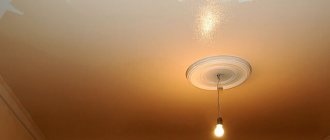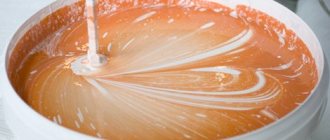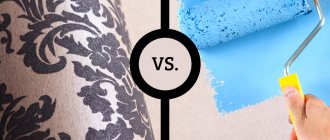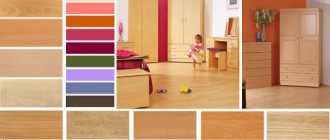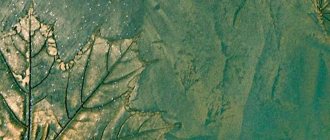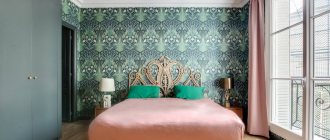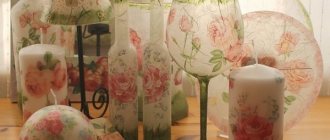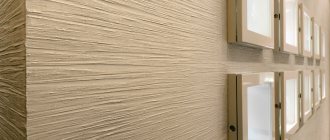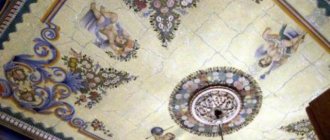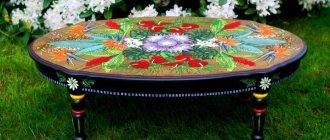To decorate walls in any interior, first of all, you need to choose the appropriate material. It is important to consider the characteristics of the product in order to obtain the desired effect. Today, the market offers a wide range of products from different manufacturers, the choice is huge, so you can create a luxurious and elegant interior in any style without any problems. Decorative paint is in great demand in this area, and there are many varieties, thanks to which you can create a special atmosphere in any room.
This finishing method is considered the most common. Painting walls and other surfaces with decorative paint allows you to cope with the task of interior design. Such material has been used in its field not so long ago, but has already won the trust of even qualified specialists. Interior paint has a number of benefits, has its own characteristics and creates a special effect depending on the type you choose. If you want to change the interior of your apartment, pay attention to these products.
Photos of the best textured paints for walls with effects
Technological techniques
Painting the walls in an apartment with textured paint can be done in different ways, which provides different perceptual effects. The following main coloring techniques are distinguished:
Single color version
The decorative effect is achieved by the relief of the coating:
- The drawing is formed from straight (horizontal and vertical), wavy, spiral lines and strokes. To do this, use a paint brush or spatula.
- Dotted bumps (speckles) applied by splashing or spraying. Use a brush, spray gun or spray gun.
- Furrows and pits. They are formed with a brush or a pointed object (combs or combs can be used).
- Drawings and geometric shapes, cut out with a pointed object into the wet mass.
Two- and multi-color execution
A relief design or pattern highlighted in color against the general background looks especially attractive. The technology involves first creating a single-color background, and then forming a relief. The following techniques are used:
- Stencil. It can be purchased ready-made or made from plastic or linoleum. It is simply applied to a uniformly painted wall in the right place and filled with paint of a different color.
- "Star dust". Colored specks are applied to the general background using brushes with fairly stiff bristles. Paint is applied to it. The brush approaches the wall, the bristles are bent outward, and then released. The splashes fly randomly, forming an original speck. Several different colors can be used.
- Contrast. The method is to use several colors with sharp differences. These can be strokes of different shapes on a uniform background, geometric shapes, stripes. Simple technology is often used. Tape is glued to the wall, with the help of which the desired figure is limited. Next, it is painted with a brush or spray gun. After removing the tape, the desired pattern is formed.
- Aged material. Paint of a different color is applied pointwise to a uniformly painted surface by repeated touching with a brush or sponge.
- Rolling the pattern. In this case, use a rubber roller with a specific pattern cut out on it. By moving it, you can form a strip with a relief pattern.
If you have artistic skills, the desired pattern is simply drawn with a brush on the wall. In this case, masks are applied using thick paint, which ensures the relief of the design.
Decorative paint application technology
An example of creating a textured coating using a sponge
It is easiest to work with textured substances; perfect smoothing of the paint is not required.
To work you will need the following tools:
- container for stirring. Any bucket convenient for you will do;
- scraper, it is better to use a square one;
- trowel;
- grater;
- rollers;
- brushes and trays of different sizes - small and large;
- sponges;
- masking tape;
- stencil;
- meter;
- hard bristle brush;
- drill with mixer attachment.
It is better to use stainless steel tools: if there are stains on the metal, they will transfer to the paint, and it will be impossible to remove the red marks from the walls.
The list of tools may vary depending on the desired effect and the technology used. Application is carried out during repairs or reconstruction.
Paint for walls in an apartment with the effect of plaster, stone or metal can be applied with your own hands. The following steps are performed:
- First, regular paint is applied, which will become the basis for decorative paint. This can be an inexpensive material, as long as the color matches the final decorative layer. The paint is mixed in a special container: a bucket or tray, and water is added to the substance according to the instructions. The liquid must be thoroughly stirred, eventually it should acquire the consistency of cream.
- Always apply paint from top to bottom, using even movements. You can use a roller or brush; with the second one you will get a thinner and more accurate layer, which is important for some application technologies.
- It is still recommended to do the first layer with a brush, and the base (when using several colors) too.
- When the main color has dried, you can paint the wall with a roller - it’s faster. The number of layers is at your discretion, depending on the desired color intensity, but before applying a new layer you need to wait until the old one has dried.
Sometimes the coating is applied with a sponge - this is the easiest way. It is suitable for decorative paints with various effects, such as sand, stone and others, implying an uneven or even fluffy surface.
Effects of decorative paint finishing
The range of interior paints today is also very wide. Mosaic paints allow you to create an imitation of granite, sandstone, marble chips or other stone, containing inclusions of a contrasting shade. Silk or velor paint pleases the eye with fascinating tints depending on the lighting. There are paints for suede and leather.
The effects of antique walls, sand dunes or sand, air clouds or fog, gold, bronze, etc. are also popular.
Using a toner, the paint is painted in the desired shade, but there are also compositions in color, it is applied quite easily in a thin layer, and requires preparation of the walls. Most often, a background coating recommended by the manufacturer is applied under the paint.
What is decorative wall paint and methods of applying it
Decorative paint is a paint that creates some visual effects. This group does not include ordinary opaque monochromatic compositions. Only those that are at least somewhat different from them. These compositions reproduce various natural materials. Silk, velvet, plush, sand, natural stone, leather, velor, etc. They are sometimes called decorative paints, since they are not just a background, but an independent decorative element.
Decorative wall paint with a silk effect is a decorative element in itself
Most often, decorative paint is applied as usual - with a brush, roller or spray gun. If the texture itself is “rich”, this is quite enough. The walls already look unusual. In this case, they are just background. Beautiful, unusual, stylish, but background.
Rollers with embossed relief - easy and simple way to get unusual wall decor
To obtain more interesting surfaces, special application techniques are used. The simplest ones are relief rollers. They break up the monotony of paint by adding relief. There are other methods too.
- The applied paint is rubbed off. So you can get wet silk or plush from “silk” paint.
- Partially wipe off the paint with crumpled paper, a sponge, a piece of fur, plastic or metal notched spatulas, metal wool, etc.
- They go over the top with a semi-dry roller or a hard brush with darker or lighter paint.
- Place plastic film on the painted piece, crumple it a little and remove it.
Some ways for creative design
In general, there are a lot of options. This process is completely creative and there are a lot of variations. And the result can be very different, even if you use the same paint.
Decorative interior paints with various special effects and their photos
Decorative paints with various special effects are colorful compositions with a special structure that are applied to the surface using special tools and can imitate the appearance of certain materials, as well as ancient coatings.
A special effect is achieved due to the chemical composition of the paint. In addition, the application technology and the tool used are important. When creating the desired appearance, some tools are required for applying paint (curly spatulas, texture rollers).
There are several types of paint with special effects.
Luminescent paint.
When applied to a surface, luminescent paint glows in the dark. It is not necessary to use this composition to paint the entire surface of the wall.
As you can see in the photo, sometimes it is enough to use decorative paint with special effects to highlight only a certain part, draw a line along the border or accentuate individual elements and designs:
Pearlescent paint.
To achieve a pearl effect, it is possible to use paint with a translucent structure. The color of the painted surface changes depending on the angle from which you look at it. What the pearlescent effect will be depends on what tools are used for coloring. The paint can be applied using a roller, sprayer or plastic spatula. Mother-of-pearl compositions can also be used to color some decorative elements.
Leather effect paint.
This effect can be achieved using a special paint application technology. When applying the first layer, a base paint is used, and after it dries, a paint of a different color is applied as the next layer. Then, without waiting for it to dry, a plastic film is applied to the surface so that numerous folds and creases form on it. After some time, the film is removed, and a pattern remains on the surface, its texture reminiscent of leather.
Metal imitation paint.
For apartments decorated in high-tech style, the use of such paint would be ideal. It must be applied in several layers, since the decorative effect is created by combining the base and finishing layers. When starting to work with such decorative paint for interior wall decoration, you need to use a spatula, and then use a brush or metal spatula. The finished surface has a metallic tint.
Antique effect paint.
This paint contains lime, which produces a picturesque design on the walls. To apply paint, use a long-bristled brush. To achieve the antique effect, you need to make circular movements with the brush, sometimes pressing on it. After painting with a brush, sponge or cloth, the surface must be cleaned, and after final drying, additional lint can be applied to the paint.
Paint with watercolor effect.
To achieve the watercolor effect, you need paint in two shades, a special roller covered with suede, fabric, brush, sponge or polyethylene. The base layer of decorative paint for interior work is applied in one color, and after it dries, a second layer of a different shade is applied. Without waiting for the second layer to dry, you need to wash it away with light erasing movements using a sponge or crumpled polyethylene. As a result, the base layer will show through in some places, creating a unique watercolor effect.
See how the interior looks after painting with decorative paint with special effects:
Sand or sand dune effect on walls
The composition of sand-effect paint includes binders, solvents, antiseptics, and crystal dispersions. When applied, we get shimmer, and after drying the texture appears. With different application techniques we get different looks - dunes, dunes, sandy overflows.
The effect of sand and sand dunes is created using special decorative wall paint
The paint is easy to apply and no special techniques are required. Due to the pronounced texture, minor wall defects are hidden. So the requirements for the surface are not so stringent.
Application and operation
The paint is easy to apply; no complicated techniques are required. Unless you want to have not just “sand”, but dunes. But to create such an effect, special compounds are required.
It is not possible to wash sand effect paint with a brush. Gentle cleaning with soft attachments on the vacuum cleaner
Please note the availability of hygiene certificates for this type of paint. The binder is not always harmless. So having certification and a certificate from the sanitary inspectorate about the amount of substances released is simply necessary.
Kinds
Textured paints differ in their composition:
- Acrylic (water-based) are slightly thicker and easier to apply. The mass dries quickly, does not emit an unpleasant odor, and does not cause allergies. Acrylic coating is not as resistant to temperature changes, excessive moisture and sunlight, so it is used only indoors.
- Vinyl paint is recommended for decorating the external walls of a building. The coating can withstand large temperature changes and does not fade.
- The silicate textured mixture includes liquid glass, which gives special strength and shine to the wall after application. Requires certain skills in work. This is an expensive paint, but it is also the most durable and easy to maintain; dust hardly settles on it; the walls can be washed with cleaning products.
- Mineral-based mass (cement + polymers) is not expensive, but it is not resistant to significant temperature changes, so it is used for decorating internal partitions. It is a dry powder that must be diluted with water to a paste-like state.
- Silicone textured paint is odorless and ideal for application to concrete surfaces. It is plastic and durable.
By type of relief created:
- “Silk” - fibers of synthetic and natural fabrics create a pleasant to the touch surface;
- “Fur coat” - due to the inclusion of quartz and granite chips in the mass, a rough, uneven texture is created (the effect of a bark beetle, a sandy surface after rain, cracking, gravel);
- “Marseille wax” - imitates natural stone (after drying, cracks and broken lines appear), water-repellent coating;
- “Atacama” - quartz sand colored particles in the composition reflect the light falling on the walls, creating a metallic glow;
- “Mizuri” - modified starch and acrylic as components of plaster, allow you to create a wavy, smooth structure;
- “Shagreen” - creates a surface that imitates the structure of leather, old metal, lemon peel;
- “Mosaic” - multi-colored polymer particles (granules, chips) in the paint make the coating bright, voluminous and multi-colored;
- “Mother of Pearl” - particles of mother-of-pearl shells in the paint give the surface smoothness and shimmering shine.
When planning to purchase textured paint, it is important to decide exactly what surface effect you want to have at home. By mixing 2-3 types of paints or adding various additives (sand, crumbs), you can achieve a new interesting structure
Types of decorative paint
Pearl effect covering for the living room or bedroom
Thanks to the variety of options, you can choose one that suits any style in the interior.
Coatings can be divided into 2 types: for external and internal work. This is the main classification, but decorative paint is also divided into types depending on the substance that forms the film on the coating.
Alkyd decorative paints
They are often used as a finishing material for facades in places of high humidity and temperature changes. The composition contains alkyd resin, which ensures the stability and long-term preservation of the coating.
The paint retains its color for a long time, does not fade or deteriorate from moisture, but it has a pungent odor and is harmful to the health of people suffering from respiratory diseases. May cause allergies. Therefore, such materials are usually used for external wall treatment or for technical rooms with good ventilation.
Adhesive decorative paints
Such coatings can be used for exterior and interior decoration; they are durable, resistant to external damage and come in a variety of color and texture options.
Glue paints can be casein, containing protein components of the dye, or dextrinated, created on the basis of bone glue. The second option is not waterproof, so it is used only indoors. In the assortment you can find many noble matte shades, as well as iridescent glossy ones, which were created by adding mica to the composition.
Water-based and emulsion
This is the most common option, presented in a wide range on the market. The main feature of the water emulsion is 100% resistance to water and moisture. If water gets on a wall covered with such paint, it will simply evaporate. At the same time, color, texture and strength will not be affected. This coating is often chosen for the bathroom or kitchen; it is also fire resistant and does not emit harmful toxins. It can be used to cover any base materials, except glued or varnished ones.
Flock paints
Decorative flock paint is used for interior decoration; it consists of several components: a base and polymer-type decorative elements. The coating creates a flake effect on the walls. Polymers can have different shapes and sizes, which allows you to create any decorative finish. Manufacturers offer flock paints, which can be one-color, two-color, matte, glossy, pearlescent, terry and smooth. They work well on concrete, plaster, cement, wood and chip surfaces, creating a rough, patterned finish.
Mosaic decorative plasters
Used for both interior and exterior decoration. This is a simple, safe for nature and humans, aesthetic material that contains a binder and decorative elements: modern materials may contain particles of granite, marble, malachite or lapis lazuli. The color can be any; synthetic materials are added to the substance to change the natural shade of the stone.
This coating can be used on concrete, brick, gypsum, lime and any synthetic wall coverings.
The substance is applied unevenly, which is due to the different sizes of impurities in the composition, this creates an original interior design.
Acrylic paints for walls
Decorative bright acrylic paint is made on the basis of acrylic resin, which provides additional density and elasticity; this coating does not deteriorate under the influence of water and due to mechanical damage. Acrylic compositions do not lose color for a long time, but they should not be used in the bathroom or other places with high humidity. Acrylic is suitable for an office or public institution.
Latex wall coverings
They are dense, smooth, glossy, and have good elasticity. The rubber in the composition forms a latex film. This type of coating is resistant to water, sunlight and mechanical damage. The film turns out to be very elastic, it can be applied to surfaces of any shape, and it will exactly repeat the relief.
Decorative effect paint for final wall finishing
The modern product allows you to choose any effect for the final finishing of interior and exterior surfaces. This allows you to implement any ideas in the interior using safe, non-toxic materials that are easy to apply and create interesting visual effects, retain their original appearance for a long time, and do not deteriorate under the influence of sun and rain.
Silk effect
Decorative wall paint with a silk effect creates noble shimmers on the walls. It contains liquid silk, which creates the feeling that the walls are covered with fabric and they look smooth. The coating can be shiny, pearlescent or matte, fabric. Silk-screen printing with glitter is also used.
With the help of such a coating, a mirage is created - the walls seem to be covered with silk
Plaster effect
This coating creates bulges on the walls, the size and shape of which depend on the amount of impurities: the surface can be moderately or very rough. To achieve this effect, shell rock, sand or stone chips of small diameter are added to it. It is not recommended to use wall coverings for facade cladding, as the plaster can deteriorate under the influence of UV rays or rain.
Paint for walls in an apartment with a plaster effect would be appropriate if applied to uneven walls - the roughness will help to visually hide surface defects.
Sand effect
This paint, applied to the wall, resembles a scattering of grains of sand. It will be appropriate for use in an office, public institution or even at home, thanks to the variety of colors and textures. The color can be pearlescent, matte or glossy. It creates an unusual texture, which will depend on the size of the sand particles: coarser river sand or finer quartz sand is used as filler. The version of sand coating with mother-of-pearl looks unusual and stylish.
Velvet or velor effect
Paint with a velvet effect is in particular demand: it gives a noble look to the walls and looks especially good in restaurants, cafes or clubs. This type of coating is often used at home.
The composition contains small solid particles that create the visual volume of the wall. The result is a perfectly smooth surface that appears velvety or velor.
Chameleon paint
The coating may change color if you look at it from different angles. The final result will depend on the thickness of the layer, substrate, wall material and application method. A good interior option for use at home - paint helps create coziness and looks original.
Metallic effect
Very noble and stylish coating. The metallic effect makes the wall perfectly smooth, as if it were covered with a thin layer of sheet metal. A good option for modern interior styles: such as modern, high-tech. Suitable for decorating offices, beauty salons, cafes and other public institutions.
During application, you can highlight certain areas by applying a thicker layer of paint to them. This will create bright highlights.
There are 3 coating options: copper, silver and gold. The latter is especially popular - golden walls would be appropriate when decorating a restaurant or beauty salon. You can shade and even decorate the gold with white on the opposite wall.
Paint for granite and marble
This material does not contain solid particles of granite or marble, but on the wall it looks like a noble stone. The effect is achieved due to the inclusion of acrylic bubbles in the substance; the surface becomes textured and refined. There is a pearl option that will give the walls a noble shimmer.
Decorative painting methods
They depend on what you want to see on your wall. Special rollers are suitable for abstraction. If you want to make repeating shapes in different parts of the wall, it is better to make a stencil.
If you want to see the whole working picture, then you need to think about what to draw first and what then. It is better to first draw sketches with a pencil on the walls, and only then start painting.
The stardust effect is often used on the ceiling. This does not require any special tools or effort.
Spray paint onto the work surface. But for a reason. If you took a brush, then you need to squeeze it out, bend it in the opposite direction from the area and release it. The remaining drops from the villi will fly to the surface and leave a beautiful mark.
The choice of paint depends on the room where the renovation is taking place. If you can use any non-staining paint in the hallway, then in the living room or bedroom you need to choose the appropriate one. Use environmentally friendly materials to avoid health problems.
Advantages and disadvantages
Decorating a room is not so easy; you need to think through everything carefully, choosing the right materials to use during work. Finishing can be called one of the main steps during renovation and construction.
Before purchasing decorative paint, you need to learn about its advantages and disadvantages:
The material is able to adhere to the surface and not lose its presentability for ten years. This is an excellent feature in contrast to wallpaper, which needs to be re-pasted every five years.
- You can repaint a wall or ceiling without first removing the previous layer, but this has its own processing features.
- The material does not fade from exposure to direct sunlight, is not afraid of scratches from pets, stress and even mold.
- If the surface is covered with such paint, it can simply be washed, that is, it is very easy to care for.
- Variety of finishing products. The market offers a wide range of not only shades, but also design effects, so the interior can be transformed by making something unique, elegant and inimitable. Even the most demanding designer will be able to satisfy his wishes and realize bold ideas. This option is best suited for children's rooms, because you can create a cheerful atmosphere in the room.
- The versatility of the paints is amazing, because they are suitable for kitchens, restaurants, bedrooms, children's rooms, bathrooms and so on.
- They have increased moisture resistance, so they are even used for facade work.
- The antistatic coating does not collect dust, which means that cleanliness remains much longer.
- Advantages of paint over wallpaper.
Any wall painted with this material will look unique and beautiful. This is much better than using wallpaper, which is exposed to moisture, fading and other external factors. Using various application technologies, you can achieve the desired effect in decoration. This paint looks rich, natural and luxurious, so even an ordinary apartment will turn into a cozy home where it will be pleasant to stay.
As for the disadvantages of the coating, it is necessary to prepare the surface before painting. But if finishing putty has already been applied to the wall, or you are processing wooden panels, metal or glass, then you can immediately paint the product. When there are cracks and defects on the surface, not all decorative paint can cope with this, so you will have to solve the problem first. Achieve cleanliness and smoothness, and only then can you start finishing.
Photo of decorative paint
Decorative wall paint is an excellent alternative to boring wallpaper, which can give the interior a unique, individual look.
The decorative effect of the coating is directly dependent on the prepared surface and the painting method. Wall decor paint can work wonders. With its help you can create an imitation of wood, silky or velvet surface.
Decorative wall paints allow you to create a unique look for your home. Manufacturers offer a choice of paints for decor with the effect of silk, with the effect of sand, with the effect of velvet, marble, granite, and precious metals (gold, silver).
Paints also come with the addition of mother-of-pearl, which results in a chameleon effect.
Similar effects are achieved by adding special plastic substances to the composition, which are found in solvents. The action of these components is aimed at changing the physical properties of the paint, and after it dries, you will see the true beauty of the coating.
Advantages
Flaws
- Small selection of finishing options. Compared to the assortment of wallpapers, there is a wide choice here.
- Ideal surface. Before applying decorative paint, you must carefully level the walls.
- Low level of heat retention. Decorative paint will not give your home additional noise and noise.
Note.
A significant difference between decorative paint and ordinary paint is its density, which it obtains thanks to the addition of special components to the composition.
Types of decorative paint
Designed for walls, depending on the place of use:
- For external work.
- For interior work.
The most commonly used classification is based on the components of the composition that contribute to the formation of the film.
Water-based paints for walls
This painting material has good water-repellent characteristics. When water gets on a painted wall, the moisture evaporates without penetrating into the coating. Such paints have excellent environmental characteristics, as well as a high level of fire safety. Can be applied to all types of surfaces, except adhesive ones.
Acrylic paints for walls
Metal
When this paint is applied to a wall, a smooth coating is formed with the shine of noble metals - copper, silver or gold. By applying thicker layers, zones can be highlighted.
Types of material
Textured paint has several varieties, differing in their composition, consistency, dyeing technology and the effect created. It is offered in 2 versions:
- Ready to use. This is paint in a liquid consistency that has a specific color.
- Dry mixture. Sometimes it is called decorative plaster. This semi-finished product is diluted with water to the desired consistency. To give the desired color, the appropriate color is introduced.
Dry mixtures last longer in the absence of humidity.
Features of the composition
The performance properties and manufacturability of a material largely depend on its base. The following varieties are distinguished:
- Silicone paint. It is suitable for facade and interior work. The coating forms a vapor-tight layer that is resistant to external influences.
- Silicate paint. Has increased resistance to negative influences. When using a primer, it should be taken into account that it must be similar in composition to paint. The main disadvantage is the high price compared to other texture dyes.
- Mineral base. The paint is sold in dry form (powder) and is most often used for outdoor work. This is the most economical option. The composition includes cement and lime.
- Acrylic paint. One of the most common options. It is sold in finished form, but there are options that allow the introduction of ingredients to create additional effects and colors.
The type of filler components is important. They affect the consistency of the paint and the size of the relief
Taking this factor into account, the following types of paint are distinguished:
- with crushed gas silicate;
- with granite or marble grains (crumbs);
- with metal inclusions providing a reflective effect;
- filled with quartz sand;
- fiber filling (synthetic or natural);
- with wood sawdust;
- with shells to give a pearlescent effect.
In particular, glitter and various drop-shaped and scaly particles are popular. To thicken the mass, modified starch is often introduced.
The height of the relief and its expressiveness depends on the size of the introduced particles. According to this parameter, paints are divided into the following types:
- Fine grain. The particle size should not exceed 0.5 mm.
- Medium grit. Particles with a size of 0.6-1 mm are used.
- Coarse grain. To create a high relief, particles up to 2-2.5 mm in size are introduced.
When choosing a textured paint, you need to familiarize yourself with its composition. The wall design style and relief pattern should be planned in advance. This will allow you to make a thoughtful choice of material.
Texture varieties
Using textured paint you can create various decor options and styles. However, there are several typical, basic textures that are formed on the wall surface:
- Simple relief. Most often, acrylic paint with sand (quartz) filler is used. The painting technology is simple.
- Mizuri. The relief is formed by high-viscosity paint, for which starch is added to it. When applying and smoothing, you need to apply significant pressure on the tool.
- Marseille wax. This coating can imitate tree bark, old stone, natural cork, etc. The main difference is the application of a film of special wax with decorative properties on top, which ensures color saturation.
- Atacama. The resulting effect can be compared to velvet with a specific softness and shimmering surface. The composition includes additives of quartz sand and metal pigments.
When comparing textured wall paint, you can clearly see the differences between the specified texture options from the photo.
Varieties of decorative paints
In specialized departments of construction stores, there is a huge selection of paint and varnish products. Particularly popular among consumers are species that do not contain toxic components in their composition.
Helps to obtain the desired shade for interior design. The most popular are water-based compositions. During the application process, water gradually evaporates from the wall surface. The polymer layer forms a dense colored film that remains on the plane for a fairly long period of time.
Today, several types of decorative paint are known. These include:
Acrylic. Such materials contain acrylic components that are tightly fixed to the surface. They tolerate moisture well. Manufacturers of decorative paint based on acrylic resin claim that the coating can last more than 10 years.
Latex. They are often used for the bathroom, kitchen and living room. This solution contains latex. It prevents premature abrasion of the surface.
Silicone. This solution is based on silicone components. They do not contain harmful impurities. This paint is used to decorate rooms with high humidity.
On sale are chameleon paints and monochromatic solutions that can be changed using color schemes. In addition, in stores you can find decorative pigments in the form of mother-of-pearl.
Areas of application of velvet paints
Beautiful and stylish finishes are suitable for apartments and offices. This option can serve as an excellent addition to cafes and restaurants. The use of this material helps to achieve a unique atmosphere. There are more than 300 shades that can be added to paints and varnishes.
When choosing, you should focus on the recommendations of designers. Neutral shades are more suitable for offices, and cozy and warm shades for apartments. If you plan to use dye for an adult bedroom, pastel colors are the ideal solution. Rich shades will fit organically into a child's room
However, it is important to control that they are not too flashy
Variety of color palette
The color palette includes more than one and a half hundred different shades, allowing you to decorate the room with any color scheme. All relief options, as well as “mizuri”, are a huge variety of tones, from white, pale yellow to red, dark burgundy. “Atacama” is made in “noble” silver, gold, and copper versions. “Marseille wax” is made in any wood shades, pink-beige, rich brown. “Shagreen” textures – silver-gray, black, almost white. “Wet silk” has the greatest variety of colors, including blue, light brown, emerald, red, etc.
Possible invoice options
The choice of textures of structural paint is limited, there are several main names, these are:
- "mizuri";
- "relief";
- "Marseilles wax";
- "wet silk";
- "Atakama".
They all have different properties, give very different visual effects, and have differences in application.
Relief
“Relief”, which contains large solid particles, creates the texture of waves, “bark beetles”, cracking, all kinds of smudges, etc. Available in several tones, applied with a roller or spatula.
Mizuri
“Mizuri” - performed using acrylic filler and modified starch. It is used to make textured or even planes, smooth wavy elements. There are many color options, the finished wall comes out with a characteristic gloss, and is applied exclusively by hand.
Marseille wax
“Marseille wax” is a name for coloring mixtures with a wax filler. When the surface is ready, it resembles an aged but shiny stone, with characteristic light and dark fragments. The coating perfectly protects against fumes and excessive humidity, and is suitable for decorating elite, luxurious premises.
Wet silk
“Wet silk” contains cotton, cellulose fibers, and polymer dyes. The finished wall has an average degree of “volume”, but the patterns on it shimmer beautifully, reminiscent of silk, velvet, velor, etc. Different brands are made in different tones.
Atacama
“Atacama” comes out the roughest, as it contains quartz sand. A plane decorated with this material shines like metal, an old mirror, a sheet of steel, and shimmers under the influence of lighting.
What types of paints are there?
All types of interior paints are based on a liquid composition. After drying, the base creates a durable film over which substances are evenly distributed. In the composition you can see:
- Antiseptics;
- Pigments;
- UV protectors;
- Corrosion inhibitors.
Before choosing a paint, it is important to pay attention to its components. Allergy sufferers will benefit from the eco-friendly component. In such products, the liquid base is water, which dries after application and does not harm human health.
Water-based coating
Environmentally friendly paint that is easy to use. It includes:
- Mineral particles;
- Pigments;
- Polymers;
- Various additives.
After drying, it forms a durable film, which consists of mineral particles. The water-based coating is odorless. Its distinctive feature is its ability to dry quickly. The paint spreads evenly on any plastered surface, including wood, concrete, and gypsum concrete. The solution will not clog the wall and will allow air to pass through, while it has a water-repellent function.
All tools used in the painting process can serve the owner for a long time, because the water-based mixture is washed off with water.
However, the coating has certain disadvantages:
- The paint loses all its antibacterial and water-repellent properties at zero temperature. Therefore, when using the material indoors, the temperature on the thermometer should be above zero.
- Due to the high percentage of water in the emulsion, the mixture may not cover metal and glossy surfaces well.
In addition to the fact that water-based paint is a safe material, it is also practical. Almost all types of dirt can be easily removed from such a surface; you just need to walk over visible stains with a damp sponge.
Acrylic paint
Acrylic coating has wide application, because in addition to exterior work, it can also be used for interior decoration. The basis of the mixture is water and polymer emulsion (acrylic). The solution has a matte, durable finish. It will be able to cover cracks of small diameter, as well as protect the walls from external influences.
This paint is well suited for wet rooms. The final result can last a long time and not wear off due to the characteristics of the room. In addition, the coating is elastic.
Acrylic paint for plaster, intended for interior work, has a moisture-resistant effect, so it should be applied exclusively to dry walls. Before starting work, you will need to ventilate the room, and then proceed to use the product.
There are several ways to apply acrylic emulsion:
- Using a roller;
- Spray gun;
- With a brush.
It is advisable to apply the paint in two layers to achieve an even coating.
Latex-based composition
The finishing can also be done using a latex mixture. A latex-based composition helps eliminate noticeable defects in walls after plastering. Main components of the material:
- Latex fillers;
- Plasticizers;
- Antibacterial components;
- Water based.
Latex is the connecting link that holds all the components together.
The presence of an antiseptic in the composition indicates that the product will help protect the coating from the formation of fungus or mold on it.
Thanks to the polymer components, using a latex composition you can achieve a smooth surface without applying multiple layers.
The advantage of this mixture is that it adheres well to the plaster without creating air bubbles or microcracks. Adhesive characteristics prevent shedding and damage to the coating.
Also, the latex base is not afraid of temperature changes. Regardless of them, it will not lose its original performance properties.
PVA paints
Using polyvinyl acetate paint you can obtain a smooth and elastic coating on indoor plaster. It fits perfectly and adheres to the wall. In addition, PVA base is suitable for concrete, wood and plaster surfaces. The paint includes the following components:
- Pigments;
- Water base;
- Antibacterial components;
- Polyvinyl acetate emulsion.
PVA paint does not adhere well to chalk whitewash, as well as surfaces treated with alumina and vitriol primers.
The material has the following advantages:
- The product is environmentally friendly and odorless.
- The mixture is suitable for painting walls in an apartment, as after drying it forms a durable elastic coating.
- The emulsion does not contain solvents.
- Dilute well with water to a homogeneous mixture.
But this type of paint has one drawback. The product can only be used in dry rooms. Moisture spoils the original functions of the paint and coating.
Silicone compounds
Silicone composition is suitable for painting walls after plastering. The mixture has unique characteristics. It can be used as facade paint for exterior use, as well as plaster for interior use.
Includes:
- Water based;
- Coloring pigment;
- Mineral particles;
- Silicone resins.
The components help the paint penetrate into the pores of the surface and merge with it into a single whole. Also, the material does not crumble under sudden temperature changes, and its structure is not disturbed.
Finishing effects using decorative plaster
In order to get the desired result on the wall, select the appropriate type of plaster and apply it using the recommended technique and tools. High-quality decorative plasters are strong and durable, moisture-resistant, and do not form mold.
Venetian plaster
- a very popular type that creates an imitation of polished marble. Application cannot be called simple, because:
- Requires fairly smooth walls;
- It is applied in several layers - the more there are, the greater the depth effect, while the material consumption is not small, and before applying the next layer, the previous one must dry;
- The technique involves applying a thin layer and sanding each layer.
But the result is worth it - the graceful shimmer of marble is mesmerizing. The shade can be absolutely any; the base compositions supplied by manufacturers are tinted with special toners.
Plasters imitating natural stone.
A very popular type is imitation travertine. You can also create the effect of masonry, stone cutting and others. Typically, one type of plaster with different application methods allows you to create a variety of effects. The dry mixture needs to be diluted with water, but travertino plaster is quite easy to apply. It is not necessary to perfectly align the walls; small unevenness will be hidden by the finishing.
Textured plasters
- another fairly popular type due to its simple application, hiding existing wall defects and elegant results with a wide variety of patterns and shades. With the help of relief mixtures they create a “world map” pattern, imitate crumpled fabric, a brick wall, make chaotic strokes or draw real pictures.
Decorative plasters are used to create walls that imitate concrete, wood, leather, and rubber. For modern interiors, microcement plaster similar to concrete is often used. Matte and pearlescent effects in a variety of shades, smooth or textured, with a cracked effect (craquelure) - the choice is very wide.
Coloring
The main condition that must be met for high-quality decoration is a smooth and clean wall surface. After its preparation, the process of applying paint begins:
- The first layer is primer. It is applied with a roller; if desired, the master can use a spray gun or other convenient tool. The primer mixture is evenly distributed over the surface and left for 3-4 hours to dry.
- The second layer is paint with a velvet effect. To distribute it over the surface of the wall, you can use a spatula or sponge, but a wide brush will be the most convenient tool. With its help, you can apply a thin layer of emulsion and immediately give it the desired pattern. Coloring is done with chaotic and circular strokes. Further processing of the coating is not carried out until the paint hardens.
- The dried surface is treated with a trowel. This helps eliminate significant unevenness while maintaining the created coating texture.
- The last thing to apply is varnish. It favorably emphasizes the design and creates additional protection from moisture and mechanical stress. The use of varnish provides an additional guarantee that the surface will not be damaged when the coating is treated with soapy water.
After finishing the finishing work, the interior partitions will look impressive and harmonious. The “velvet” coating will add coziness to the room. In this case, the design on the surface will depend only on the imagination of the master and the tool he uses!
We also recommend that you consider the option of painting it to look like silk. An embossed paint roller can also give an interesting decorative effect on the walls.
Decorative paint for walls with mother-of-pearl: application features
Paint with a pearlescent effect is usually made based on an acrylic water-soluble copolymer. This means it is safe. The light, unique shine of mother-of-pearl cannot be confused with anything.
The main thing is application technique
And if you want “gold” or “silver” wall paint, but not provocative, then you will most likely like pearlescent paint in a suitable shade. Another option is silk. Slightly different look, more subdued shine. But you need to see it all. Even in the photo you can't show the difference.
Colors and additives
There are enough shades and colors of decorative paint with a mother-of-pearl effect. They usually sell a concentrate that is diluted with water. For one part of concentrate take 6-8 parts of water. The intensity of the shine depends on the amount of water.
If you add microfibers, you can hide wall defects
Flocks and glitters can also be added to the base composition - white or colored inclusions, small fibers, sand, multi-colored crystals, sparkles. Candis and San Marco have such options. There are also varnishes with mother of pearl. They can be used to coat base paint and create an abrasion-resistant pearlescent surface.
Application Features
But working with pearlescent paint is not easy. It is especially difficult to obtain a uniform pearlescent sheen over the entire surface. This is not an easy task. Even the masters can’t handle everything, and it’s better not to try it yourself. You will only waste an expensive product.
But if you want to get pearlescent stripes, waves, stains - no questions asked. True, you need to practice first, since the application technique greatly affects the appearance. The tool used to apply the pearlescent paint also has an effect. Some types are applied in one layer, others in two. Read the description.
Those that are applied in two layers do not mean “bad”. They give you more options. The first one can be considered basic. It creates the background. But the second is to draw the relief. You can use a roller with a structured “coat,” a spatula, or brushes with bristles of varying hardness. In general, there are many options. But you will need to reproduce all the movements almost exactly. So it takes training. Or a good master. But also ask him to show a sample in a small area, and only then agree or not.
This paint can be applied as a second layer to the structural one. If you use a translucent one, you can only get a slight lightening of the color in the texture and a characteristic shine. Or you can go a few shades darker/lighter or, in general, apply paint of a different color with light strokes.

